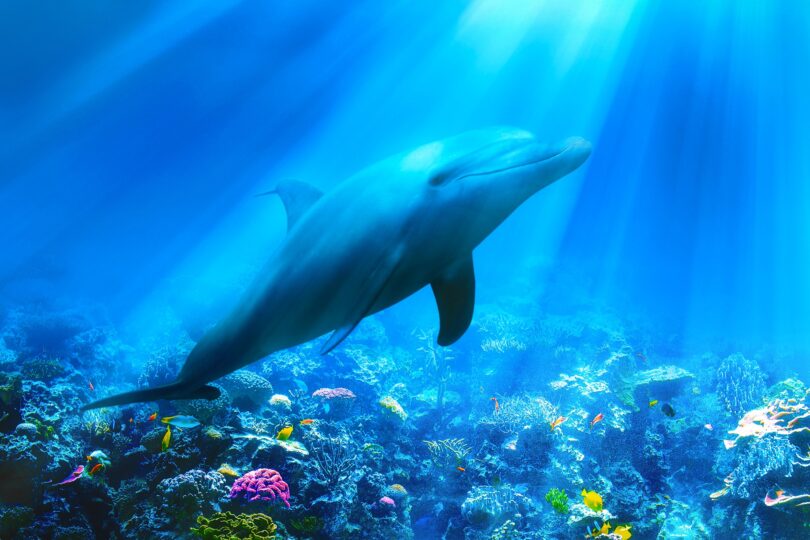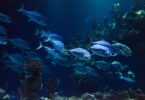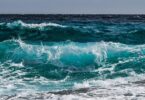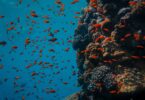Introduction
Underwater photography is a captivating art form that allows individuals to immerse themselves in the beauty of the ocean’s depths. From vibrant coral reefs to elusive marine life, capturing the magic of the underwater world can be a rewarding experience. In this guide, we will delve into the essential tips and techniques needed to master the art of underwater photography in 2024.
I. Understanding Light and Color
Natural Lighting Techniques for Underwater Photography
When shooting underwater, natural light plays a crucial role in determining the quality of your images. Understanding how light behaves in water and how to work with it can result in stunning underwater photos.
Color Correction Tips for Underwater Photography
Color correction is crucial for underwater photography because water absorbs and alters colors, often resulting in a blue or green tint. Here are some tips for effectively correcting colors in underwater photos:
Shoot in RAW: RAW format preserves more image data, giving you greater flexibility in post-processing, including color correction.
White Balance Adjustment: Set your camera’s white balance manually or use a custom white balance setting to compensate for the color shifts underwater. Some cameras also offer underwater white balance presets.
Use a Color Correction Filter: Attach a color correction filter to your camera or housing to counteract the blue or green tint caused by water. Filters are available in different strengths for different depths and water conditions.
Adjust Levels and Curves: In post-processing software like Adobe Lightroom or Photoshop, adjust the levels and curves to fine-tune the overall color balance. Pay attention to the red, green, and blue channels individually to achieve the desired color balance.
Selective Color Correction: Use adjustment brushes or masks to selectively correct colors in specific areas of the photo. This can help balance out colors that are more heavily affected by the water’s tint.
Utilize White and Neutral Objects:
Include a white or neutral-colored object in your scene, such as a slate or dive buddy’s glove, to use as a reference for color correction during post-processing.
Monitor Histogram: Keep an eye on the histogram while editing to ensure you’re not clipping any colors or losing detail in the highlights or shadows.
Experiment and Practice: Every underwater environment is different, so experiment with different techniques and settings to find what works best for your specific conditions. Regular practice and experimentation will improve your color correction skills over time.
Learn from Others: Study the work of experienced underwater photographers and learn from their techniques and approaches to color correction.
Consider Professional Help: If you’re struggling to achieve the desired results on your own, consider seeking advice or even professional assistance with color correction. There are also online communities where you can seek feedback and guidance from fellow underwater photography enthusiasts.
The natural blue hue of water can often distort the colors in your images. Learning how to correct these color casts using post-processing tools can enhance the vibrancy of your underwater photos.
Utilizing Artificial Lighting in Underwater Photography
In situations with limited natural light, artificial lighting sources such as strobes and video lights can help illuminate your subjects and bring out their true colors.
II. Composition and Framing Techniques
Creating Dynamic Compositions in Underwater Photography
Experimenting with different angles, perspectives, and framing techniques can add visual interest to your underwater photos. From leading lines to symmetry, there are numerous composition options to explore.
Understanding the Rule of Thirds in Underwater Photography
Applying the rule of thirds can help you create well-balanced and visually appealing compositions. By positioning your main subject off-center, you can draw the viewer’s eye into the frame.
Balancing Negative Space in Underwater Photography
Negative space, the empty areas surrounding your subject, can be used strategically to create a sense of scale and depth in your underwater images. Finding the right balance is key to creating compelling compositions.
III. Overcoming Challenges in Underwater Photography
Dealing with Water Visibility Issues
Poor water visibility can pose a challenge for underwater photographers. By adjusting your shooting techniques and experimenting with different depths, you can still capture striking images in less-than-ideal conditions.
Managing Buoyancy and Depth in Underwater Photography
Maintaining proper buoyancy control underwater is essential for getting stable and clear shots. Practice controlling your movements and buoyancy to ensure your images turn out sharp and in focus.
Techniques for Capturing Marine Life in Underwater Photography
Photographing marine life requires patience, stealth, and respect for the underwater environment. By understanding the behavior of different species and practicing ethical wildlife photography, you can capture stunning images of marine creatures.
IV. Post-Processing and Editing
Best Practices for Editing Underwater Photos
Editing plays a crucial role in enhancing the colors, contrast, and overall look of your underwater images. Learning how to use editing software effectively can take your photos to the next level.
Utilizing Filters and Presets in Underwater Photography
Filters and presets can be useful tools for quickly enhancing your underwater images. From color correction filters to underwater-specific presets these tools can streamline your editing process.
Enhancing underwater photography through creative editing techniques can truly bring out the beauty of the underwater world. Here are some tips to help you get started:
Color Correction: Water absorbs light, and the deeper you go, the more colors are lost. Use editing software to adjust the white balance and restore natural colors. Increasing contrast can also help make colors pop.
Remove Backscatter:
Underwater photos often suffer from backscatter, which are tiny particles suspended in the water that reflect light back into the camera. Use the spot healing or clone stamp tool to remove these distracting elements.
Selective Enhancements:
Use adjustment layers or brushes to selectively enhance certain areas of the photo. This can help draw attention to the focal point of the image or highlight specific details.
Add Contrast and Clarity: Increasing contrast and clarity can help bring out details in underwater photos, making them appear sharper and more defined.
Create Depth:
Use techniques like dodging and burning to create depth in your underwater photos. Lightening certain areas and darkening others can help create a sense of depth and dimensionality.
Add Filters:
Experiment with different filters to enhance the mood of your underwater photos. For example, adding a blue or green filter can enhance the underwater atmosphere, while a warming filter can add warmth to the image.
Play with Light:
Use editing software to simulate different lighting conditions and create interesting effects. Experiment with adding rays of light, creating sunbursts, or simulating light beams shining through the water.
Experiment with Textures:
Overlaying textures can add depth and interest to your underwater photos. Try adding textures like bubbles, water ripples, or underwater vegetation to enhance the overall look and feel of the image.
Crop and Straighten:
Crop your photos to remove any distracting elements and straighten the horizon line if necessary. This can help improve the composition and overall impact of your underwater photos.
Creative Effects:
Don’t be afraid to get creative with your editing techniques. Experiment with different blending modes, overlays, and filters to create unique and artistic effects that showcase the beauty of the underwater world.
Remember, the goal of editing underwater photos is to enhance their beauty while still maintaining their natural look and feel. Experiment with different techniques and find what works best for your style and the specific characteristics of each photo.
Capturing the depth of underwater photography is akin to exploring an entirely different world—one that exists beneath the surface, teeming with life, mystery, and ethereal beauty. With each click of the camera shutter, photographers plunge into a realm where light dances in mesmerizing patterns, where vibrant hues blend seamlessly, and where every creature, big or small, tells its own story.
Underwater photography transcends mere snapshots:
it’s a medium through which we uncover the wonders of the deep, inviting viewers to immerse themselves in the captivating landscapes and the intricate ecosystems that lie beneath the waves. From the majestic movements of marine giants to the intricate details of delicate corals, every image captured beneath the surface holds a narrative waiting to be shared.
Yet, mastering the art of underwater photography requires more than just technical skill—it demands patience, adaptability, and a deep understanding of the marine environment. It’s about embracing the challenges of working in an ever-changing, often unpredictable setting, where currents shift and visibility fluctuates, to seize fleeting moments of beauty and grace.
Moreover, underwater photography serves as a powerful tool for conservation and education, allowing us to document the fragile beauty of our oceans and raise awareness about the pressing issues they face. Through stunning imagery, photographers can inspire action, fostering a deeper connection between humanity and the underwater world we so depend on.
In the end, the depth of underwater photography lies not only in the images themselves but in the profound impact they have on those who behold them. They evoke a sense of wonder, curiosity, and reverence for the vast and vibrant world that lies beneath the waves—a world deserving of our protection, admiration, and respect.







